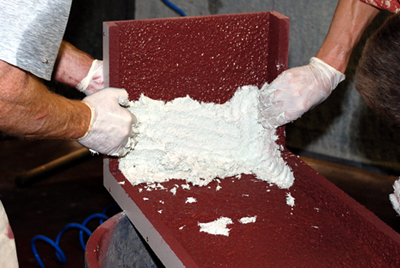I got the following question regarding my blog post “Mix design for cast in place concrete countertop in Cayman“:
Q: Is it possible to use gray cement for the core and white cement as an outer layer?
White and gray portland cement are very similar to each other, and can be safely blended together. You can use one color cement for a core mix and a different color cement for a shell mix, provided the mix designs and the water/cement ratios are identical.
However, I would hesitate to use a gray cement core with a white cement “shell” for aesthetic reasons. The simple reason is that it’s very impractical to pour a core mix without contaminating the form surfaces, contain the core mix so that it stays where you want it, and to pour the visible shell mix and still end up making good concrete without voids or weak zones. The minor cost savings in cement was not worth the trouble. (White cement in Cayman is about US$20 per bag, vs gray cement at US$10 per bag.)
The exception is when an ultra-expensive pigment is involved. In that case it is sometimes worthwhile in cost savings to take the extra trouble to use the pigment only in the outer layer. I call this “buttering”. It is easy to do with a hand packed precast method or with GFRC, but difficult with wet cast precast or cast in place. Be aware that some exotic pigments could affect the properties of the mix to the extent that you have issues with the 2 layers bonding.
Tips for “buttering”:
- The first layer should be well compacted, of even thickness and fairly smooth. Loose, clumpy or uneven concrete will create weak zones that could lead to cracking or delamination.
- The second batch of concrete should be the identical mix (but without glass or stone if used in the first mix).
- It’s very important to use the same water content, and merely add more superplasticizer to make the second batch more workable.
- It’s important to place the second batch before the first becomes hard or dries out.
For the gazebo job I did in Grand Cayman (8000 lbs of concrete), the extra price from using all white cement added up to only about an extra $100 in cost. Consider the need for 2 separate mixers, the extra labor and time needed to wrangle two mixes, and it’s easy to see that at times it’s simpler to bite the bullet and pay a bit more up front to make things simpler, and in the end, better and less expensive overall.
Here’s an example of a GFRC piece done with red outer shell (mist coat) and white core (backer). This was done just for illustration purposes. You can see in the second photo that some of the white showed through when the mist coat chipped.


